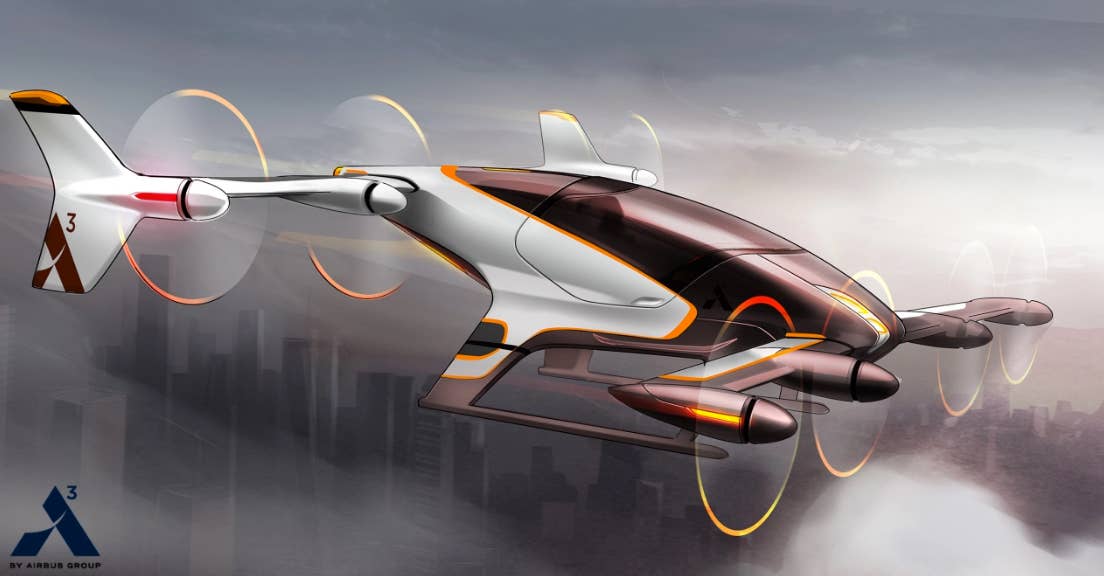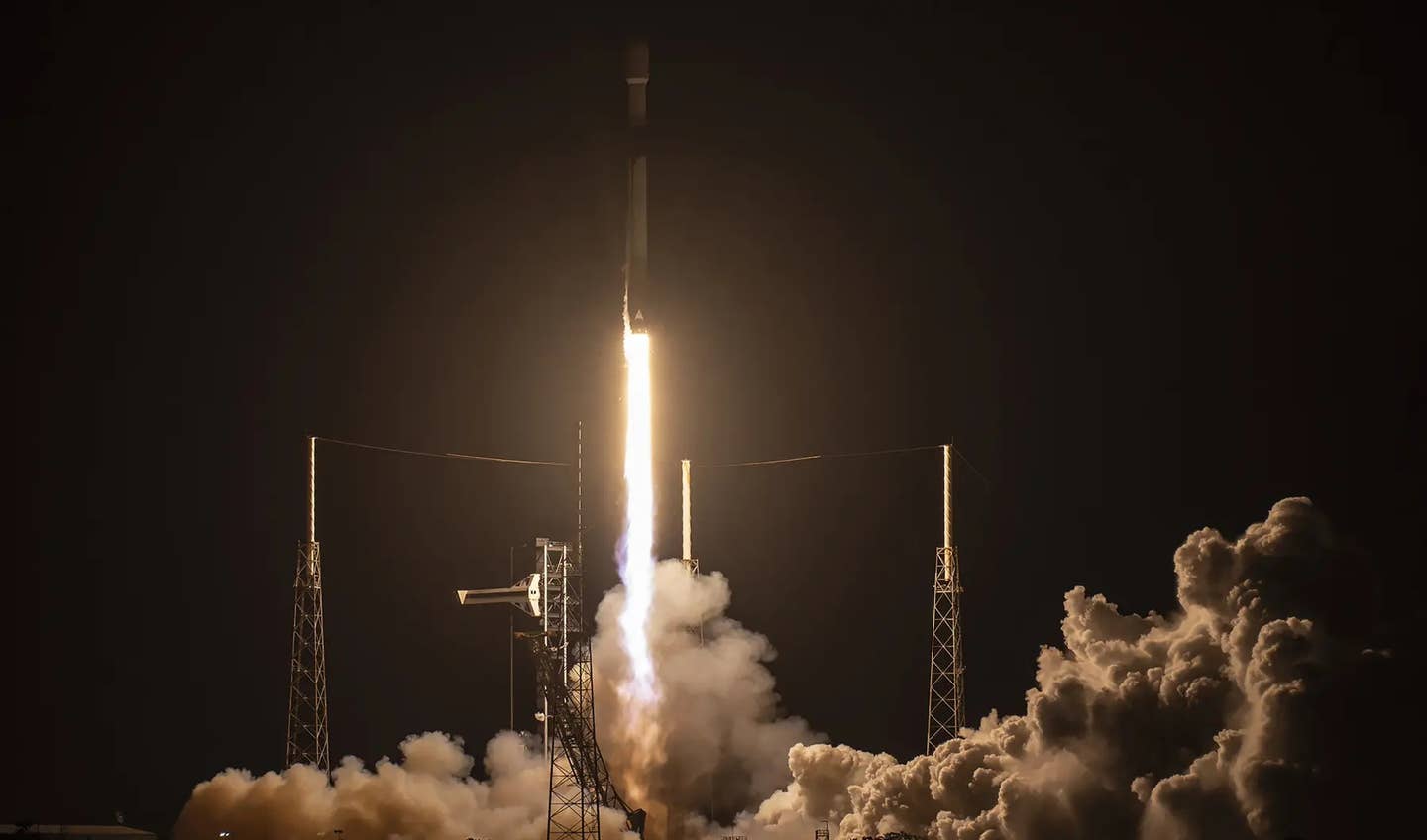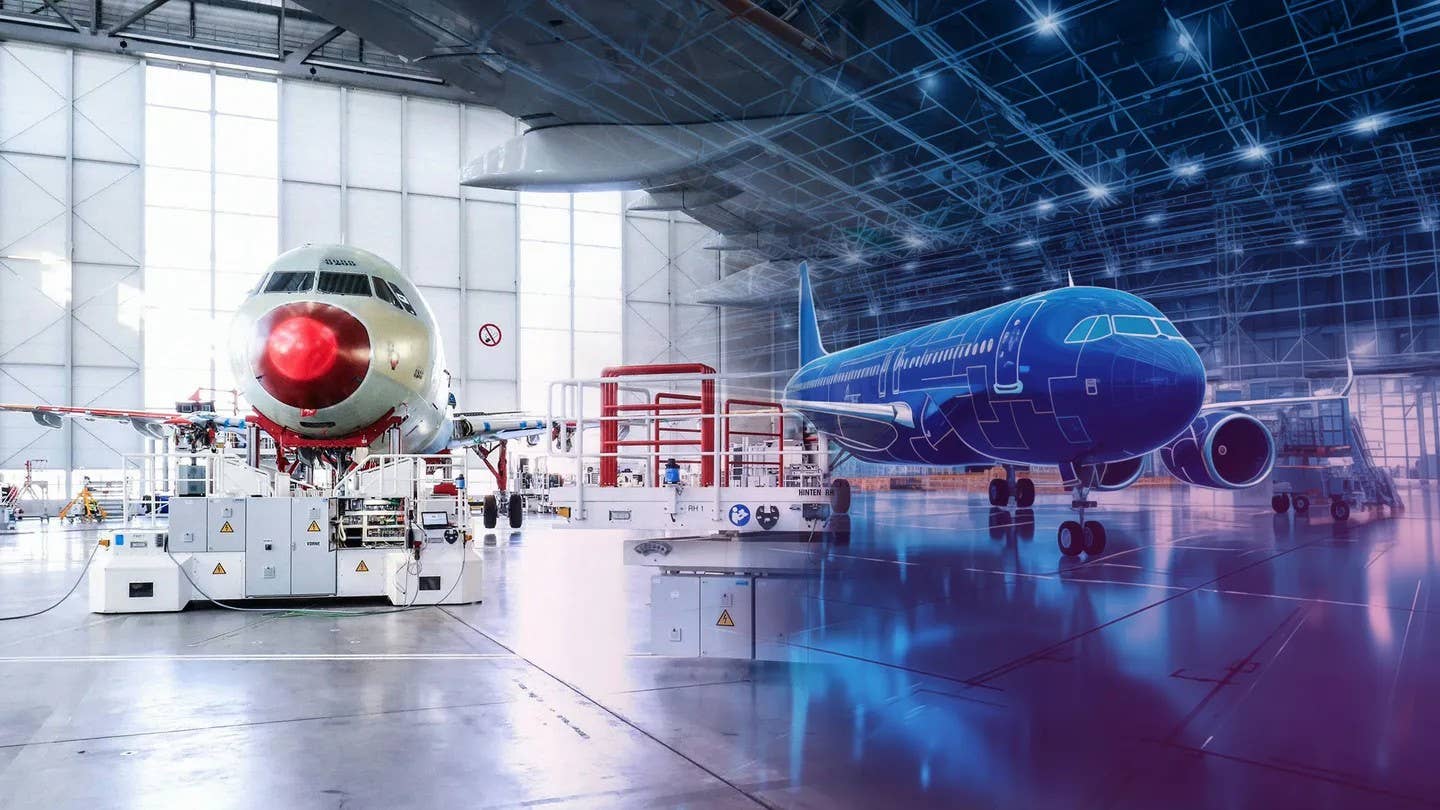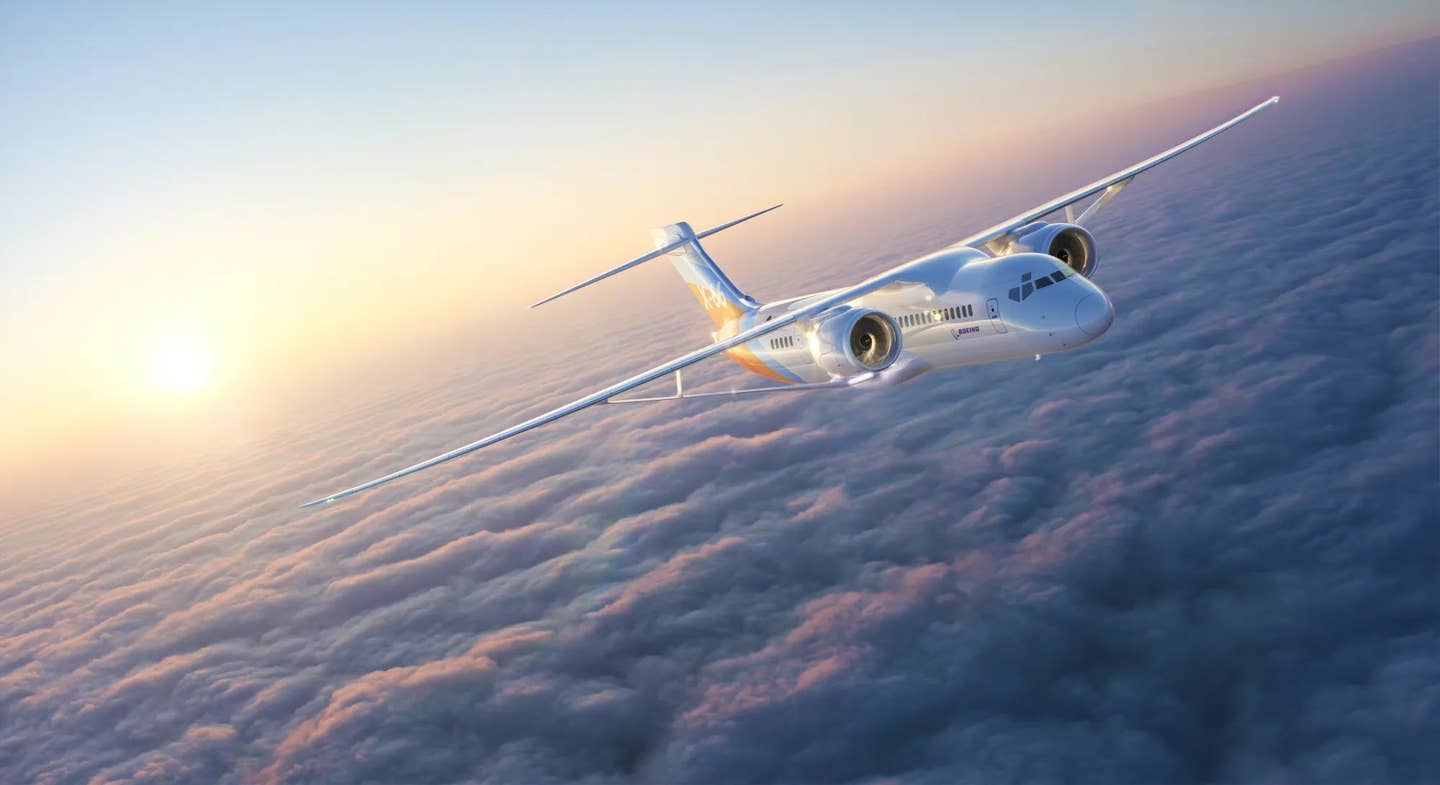
A rendering of Airbus’ autonomous flying taxi prototype, Project Vahana. Airbus
Airbus, maker of airliners like the mammoth A380, also sees a market for smaller autonomous flying taxis using vertical takeoff and landing capabilities for short trips around big urban centers.
The Airbus VTOL craft, carrying just a single person, would use environmentally friendly electric motors to spin the aircraft’s eight propellers. The eight propellers also make for a more compact airframe than would be needed for a machine with fewer, larger propellers.
Engineers at Airbus say the tilt-wing design offers better cruise performance than a traditional helicopter and consumes less energy than a tilt-rotor like the V-22 Osprey.
The airframe builder was committed enough to last year create a new division called Urban Air Mobility to oversee the flying taxi project code-named Vahana. Plans include not only creating the prototype flying car, but also an operational app for passengers to book a ride much like people on the ground do today with Uber and Lyft.
Project Vahana is moving ahead at full speed, according to Airbus, and could become viable by 2021, with a prototype expected to be flying before the end of this year. All of this assumes Airbus will move forward with the project and overcome the current regulatory restrictions that prohibit people being flown around in pilotless aircraft.

Sign-up for newsletters & special offers!
Get the latest FLYING stories & special offers delivered directly to your inbox






